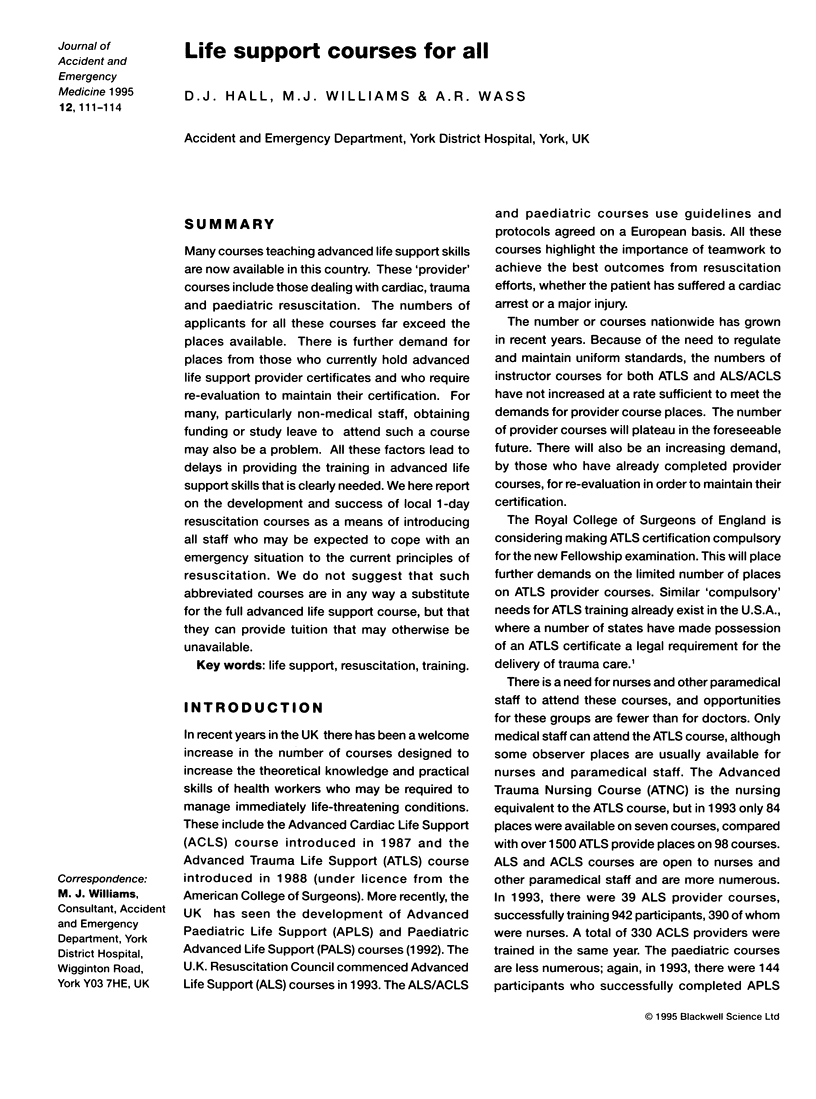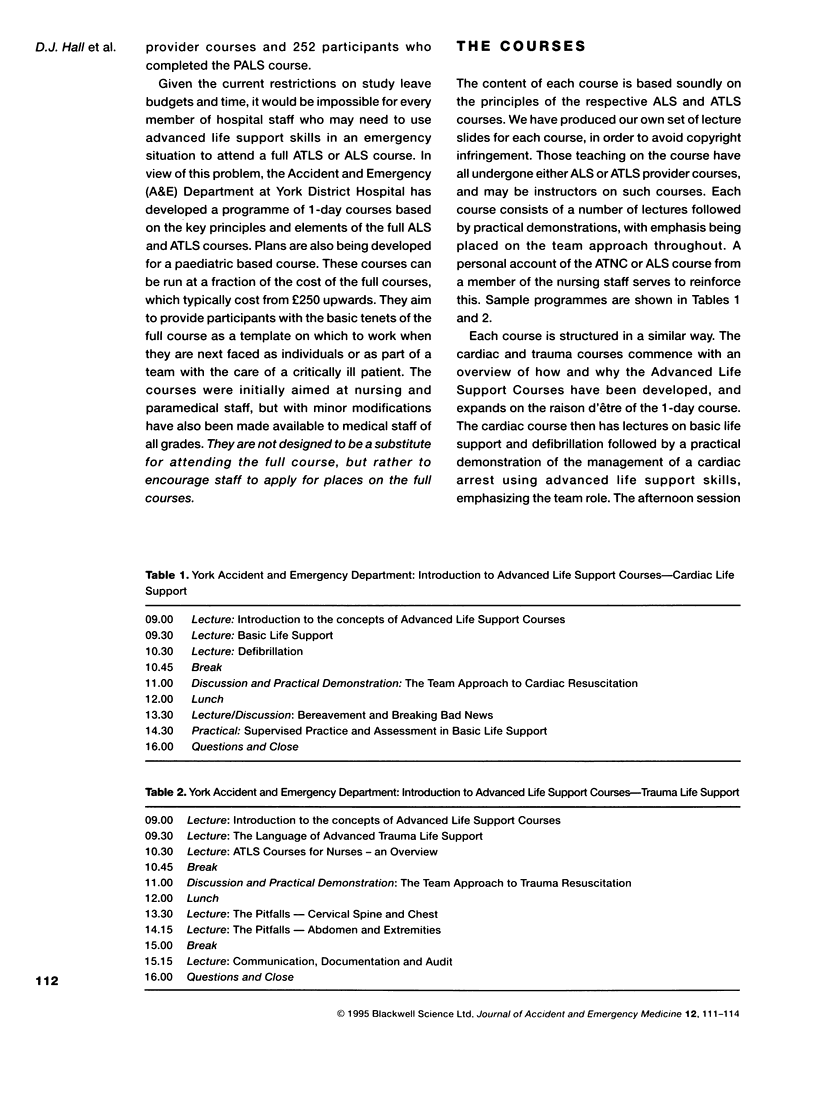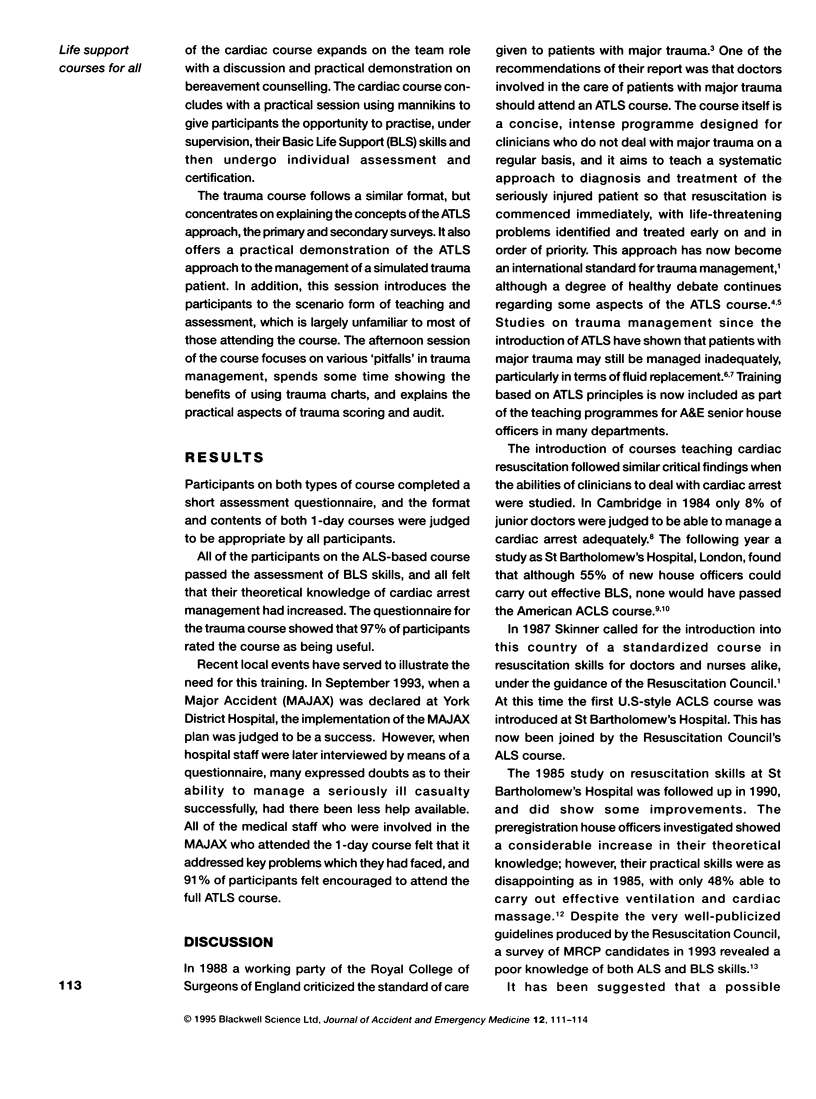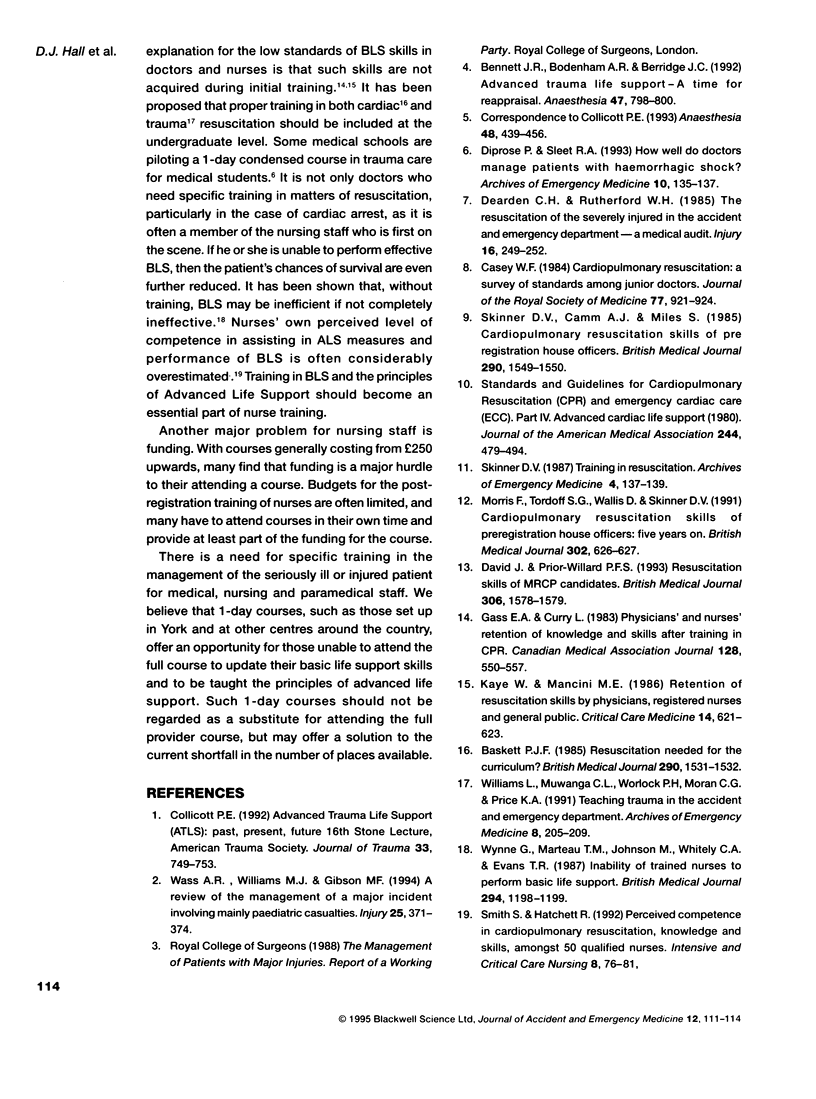Abstract
Many courses teaching advanced life support skills are now available in this country. These 'provider' courses include those dealing with cardiac, trauma and paediatric resuscitation. The numbers of applicants for all these courses far exceed the places available. There is further demand for places from those who currently hold advanced life support provider certificates and who require re-evaluation to maintain their certification. For many, particularly non-medical staff, obtaining funding or study leave to attend such a course may also be a problem. All these factors lead to delays in providing the training in advanced life support skills that is clearly needed. We here report on the development and success of local 1-day resuscitation courses as a means of introducing all staff who may be expected to cope with an emergency situation to the current principles of resuscitation. We do not suggest that such abbreviated courses are in any way a substitute for the full advanced life support course, but that they can provide tuition that may otherwise be unavailable.
Full text
PDF



Selected References
These references are in PubMed. This may not be the complete list of references from this article.
- Baskett P. J. Resuscitation needed for the curriculum? Br Med J (Clin Res Ed) 1985 May 25;290(6481):1531–1532. doi: 10.1136/bmj.290.6481.1531. [DOI] [PMC free article] [PubMed] [Google Scholar]
- Bennett J. R., Bodenham A. R., Berridge J. C. Advanced trauma life support. A time for reappraisal. Anaesthesia. 1992 Sep;47(9):798–800. doi: 10.1111/j.1365-2044.1992.tb03260.x. [DOI] [PubMed] [Google Scholar]
- Casey W. F. Cardiopulmonary resuscitation: a survey of standards among junior hospital doctors. J R Soc Med. 1984 Nov;77(11):921–924. doi: 10.1177/014107688407701105. [DOI] [PMC free article] [PubMed] [Google Scholar]
- Collicott P. E. Advanced Trauma Life Support (ATLS): past, present, future--16th Stone Lecture, American Trauma Society. J Trauma. 1992 Nov;33(5):749–753. [PubMed] [Google Scholar]
- David J., Prior-Willeard P. F. Resuscitation skills of MRCP candidates. BMJ. 1993 Jun 12;306(6892):1578–1579. doi: 10.1136/bmj.306.6892.1578. [DOI] [PMC free article] [PubMed] [Google Scholar]
- Dearden C. H., Rutherford W. H. The resuscitation of the severely injured in the accident and emergency department--a medical audit. Injury. 1985 Jan;16(4):249–252. doi: 10.1016/s0020-1383(85)80013-9. [DOI] [PubMed] [Google Scholar]
- Diprose P., Sleet R. A. How well do doctors resuscitate patients with haemorrhagic shock? Arch Emerg Med. 1993 Sep;10(3):135–137. doi: 10.1136/emj.10.3.135. [DOI] [PMC free article] [PubMed] [Google Scholar]
- Gass D. A., Curry L. Physicians' and nurses' retention of knowledge and skill after training in cardiopulmonary resuscitation. Can Med Assoc J. 1983 Mar 1;128(5):550–551. [PMC free article] [PubMed] [Google Scholar]
- Morris F., Tordoff S. G., Wallis D., Skinner D. V. Cardiopulmonary resuscitation skills of preregistration house officers: five years on. BMJ. 1991 Mar 16;302(6777):626–627. doi: 10.1136/bmj.302.6777.626. [DOI] [PMC free article] [PubMed] [Google Scholar]
- Skinner D. V., Camm A. J., Miles S. Cardiopulmonary resuscitation skills of preregistration house officers. Br Med J (Clin Res Ed) 1985 May 25;290(6481):1549–1550. doi: 10.1136/bmj.290.6481.1549. [DOI] [PMC free article] [PubMed] [Google Scholar]
- Skinner D. Training in resuscitation. Arch Emerg Med. 1987 Sep;4(3):137–139. doi: 10.1136/emj.4.3.137. [DOI] [PMC free article] [PubMed] [Google Scholar]
- Smith S., Hatchett R. Perceived competence in cardiopulmonary resuscitation, knowledge and skills, amongst 50 qualified nurses. Intensive Crit Care Nurs. 1992 Jun;8(2):76–81. doi: 10.1016/0964-3397(92)90035-i. [DOI] [PubMed] [Google Scholar]
- Wass A. R., Williams M. J., Gibson M. F. A review of the management of a major incident involving predominantly paediatric casualties. Injury. 1994 Aug;25(6):371–374. doi: 10.1016/0020-1383(94)90128-7. [DOI] [PubMed] [Google Scholar]
- Williams L., Muwanga C. L., Worlock P. H., Moran C. G., Price K. A. Teaching trauma management in the accident and emergency department. Arch Emerg Med. 1991 Sep;8(3):205–209. doi: 10.1136/emj.8.3.205. [DOI] [PMC free article] [PubMed] [Google Scholar]
- Wynne G., Marteau T. M., Johnston M., Whiteley C. A., Evans T. R. Inability of trained nurses to perform basic life support. Br Med J (Clin Res Ed) 1987 May 9;294(6581):1198–1199. doi: 10.1136/bmj.294.6581.1198. [DOI] [PMC free article] [PubMed] [Google Scholar]


